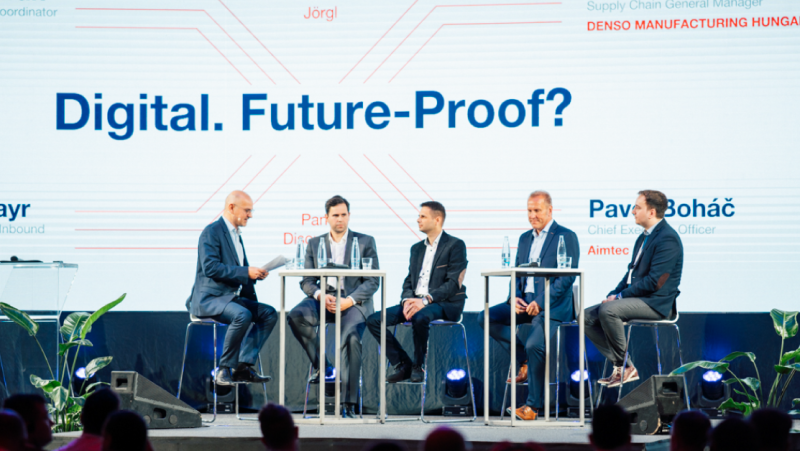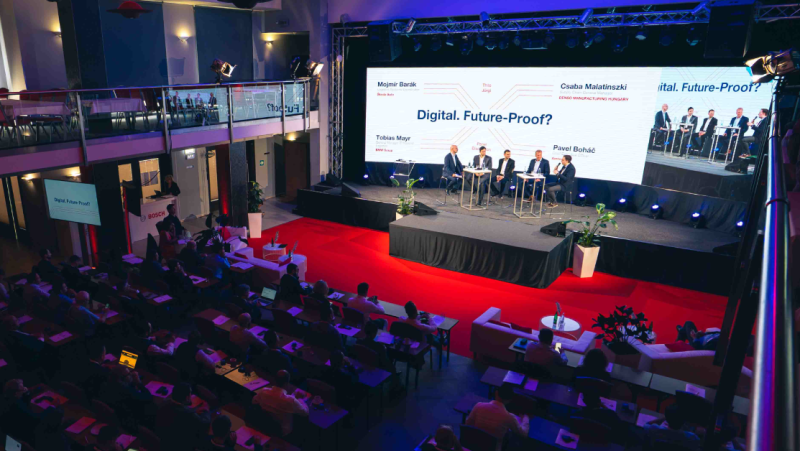Expensive electromobility may endanger Europe’s OEMs
- Automotive
- Article
Even ten years from now, European OEMs will still spend more to produce each electric vehicle than they would for a compact automobile with an internal combustion engine. Pressure on companies’ profitability will continue to grow, and in time it can lead them to merge into larger units – and to share R&D costs as well. Will Europe’s automotive leaders fall into the red?
According to a study performed by the Oliver Wyman consulting firm for Financial Times, even at the end of the decade, it will remain more expensive for European OEMs to manufacture a battery-powered compact electric vehicle (EV) than a compact automobile (a lower-midrange car – a VW Golf, Škoda Octavia or Toyota Corolla) with a traditional internal combustion engine. These findings point towards a risk for the profit margins of such groups as Volkswagen or the newly created Stellantis (a fusion of PSA and FCA) in a time when these OEM manufacturers are preparing for a massive electric offensive and planning to launch dozens of all-electric models in the coming years. “There can be money made from electric vehicles, but it will be lower than [petrol and diesel models] historically,” noted Simon Schnurrer, an automotive partner at Oliver Wyman, for the Financial Times.

Image source: Financial Times
The cost of an EV’s most expensive component, that is, its 50kWh battery, should fall by the end of this decade from its current average of €8,000 to roughly €4,300.
Production costs will be lowered by gigafactories and simpler automation
The study notes that the costs for the production and assembly of an internal-combustion vehicle cannot be expected to significantly drop any further. This is because automakers are focusing their investments on fine-tuning production lines for the simpler electric vehicles, which contain fewer components and whose assembly can thus be automated more easily.
Even if the average EV manufacturing costs were to drop before 2030 by one fifth, to a total of €16,000, there would still be a 9% difference relative to the manufacturing costs for a compact car with an ICE (internal combustion engine). The cost of an EV’s most expensive component, that is, its 50kWh battery, should fall by the end of this decade from its current average of €8,000 to roughly €4,300, primarily thanks to the completion of several battery “gigafactories” in Europe and Asia. By 2030, these factories’ capacity should grow from its current 39 GWh to a value of 617 GWh, 40% of which will be located in Germany. Europe’s share in the overall global capacity should thus equal roughly one quarter in 2030.
 Manufacturing Map: Global Installed Capacity
Manufacturing Map: Global Installed Capacity
Source: VDE Renewables
Where’s the way out? In development investments and outsourcing to Tier 3.
Mr. Schnurrer stated that the production of electric models will be cheaper “at some point, and not far beyond 2030.” Hopes for a reduction to EV manufacturing prices can also be found in a possible battery development breakthrough, e.g. the more widespread use of solid state batteries as a replacement for lithium-ion.

Development of the average price of a lithium-ion battery pack
Source: BloombergNEF
The study also states that automakers will be forced to pass on part of their value chain (part of their share in added value) to suppliers – especially Tier 3 suppliers. These are often specialised in individual components, for example semiconductors or battery production materials such as cobalt or nickel. Automakers currently do not have the money to develop these areas, because they are allocating a large portion of their R&D budgets to the development of electric models.
Despite their higher production costs, compact EVs often sell for less in Europe than internal-combustion models. This is primarily thanks to generous subsidies in Western European countries as a bonus for the purchase of a low-emissions vehicle (in France, these go as high as €7,000), combined with scrappage allowances (in France as high as €5,000).
We stand amidst an historic transformation of the automotive industry. The growing electromobility trend will continue to directly influence the behaviours and the strategic planning of OEM automakers. We might speak here of the effort to minimise manufacturing costs and the resulting greater dependence on suppliers further down in the value chain, or of the blossoming cooperation among firms that previously tended more to be competitors. In any case the lesson is clear. The foundation of success is to be awake at the switch and prepare for increased dynamism in a market that is changing at a breakneck pace.
Share article
Top stories from logistics, production and IT.
Subscribe to Aimtec Insights
By registering, you agree to the processing of your personal data by Aimtec as described in the Privacy policy.
Get top stories and articles
from Logistics, Production and IT.
Subscribe to Aimtec Insights
By registering, you agree to the processing of your personal data by Aimtec as described in the Privacy policy.








